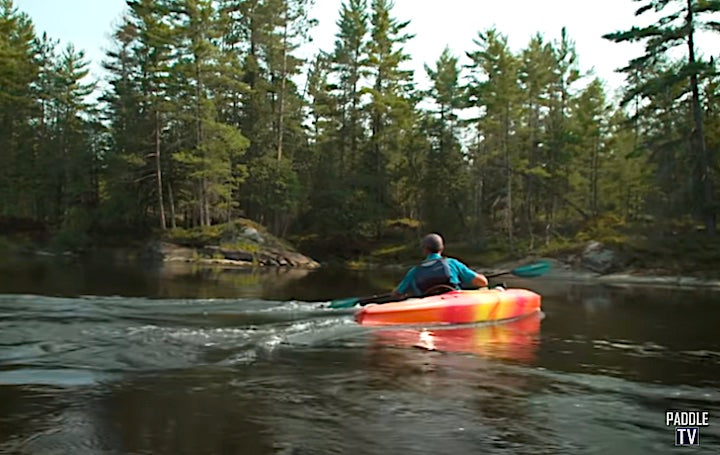How to Kayak on Rivers & Current

(photo courtesy of @paddle365)
Kayaking on rivers is amazing—but current has some hazards you need to know and think about. Join Aqua Bound ProStaffer, Ken Whiting, as he goes over in this video how to paddle with confidence on rivers and in current:
Know Your Personal Limitations
The best way to learn how to kayak, canoe, packraft or paddleboard in current is to take private instruction through a group class or one-on-one coach.
If you don’t have any experience or instruction, you need to stick to Class I water. These are calm waters with little or no waves or obstructions to navigate around.
Class II water involves some hazards and waves, making it the perfect environment for inexperienced beginners to capsize!
Most whitewater accidents happen when untrained kayakers paddle with the wrong equipment in waters that are too much for them to handle.
For our purposes here, we’re talking about Class I water—which, by the way, doesn’t have to mean slow! There’s fast-moving Class I water out there if you’re looking for more speed without the hazards.
Key Water Hazards You Need to Know About
The most common hazard in moving water is something known as strainers—usually fallen trees or logs in the water. The water can get through a strainer, but not a kayak, paddle or person.
Even in slow-moving current, the water pressure going into a strainer can be forceful. Every strainer has the potential to be dangerous, even deadly. So you want to avoid kayaking into one at all costs.
Be on the lookout for fallen trees and other strainers. And, as Ken says, “Just because it wasn’t there yesterday, doesn’t mean it won’t be there today.”

Another hazard to know about it low-head dams and weirs. Many of these have been removed because of their safety hazard. They’re even known as “drowning machines” because these benign-looking currents form a “keeper hole” that doesn’t let objects—like kayaks—out.
Always portage around a low-head dam or weir, no matter how fun it looks.
The last type of water hazard discussed here is a foot entrapment. This is when your foot gets stuck in the river bottom—between rocks, for example—when you enter or exit your kayak, or if you decide to go swimming in the river.
Anytime you’re in current, something as simple as a foot entrapment can be dangerous if you fall into the water.
Important River Dynamics You Need to Know About
There are two parts to a river: the main current and eddies. Eddies are the calm spots formed by obstructions in the water, like boulders, points or islands. Eddies are safe zones where you’re protected from the main current.
Where the current and eddy meets, though, is the most unstable water of the river. Learn to spot the “eddy lines” and avoid them. You’ll want to spend your time either in the main current or in the eddies.
To move from an eddy into the main flow, get some speed and cross the eddy line a bit upstream. As you enter the main current and it takes your bow with it, lean into the direction of the turn a bit.
When you paddle into an eddy you’ll also lean a bit into the natural turn of your kayak as you cross the eddy line.

If you encounter waves in the main current, point your kayak straight into them and keep paddling forward. If you take on water in your kayak’s cockpit going through bigger waves, you’ll use your kayak sponge or bilge pump to remove it.
If you meet a rock sideways don’t lean away from it. The current’s pressure could cause a capsize. Instead, lean into it and push off of it with your hand. The current will take you around it and you can continue on downstream.
If you capsize in a river, avoid standing on the river bottom to get yourself back in. You don’t want to risk a foot entrapment. Assuming you’re paddling with someone else, you can give them your paddle and swim your kayak to shore, empty it out and start over.
If you’re alone (which we don’t advise!) then be sure to get your paddle and boat, then head to shore to empty the water and climb back in.
Rivers are a wonderful kayaking environment as long as you’re prepared for the currents and potential hazards.
Let us help you choose your next kayak paddle! Contact our friendly Customer Service team today: 715-755-3405 • sales@aquabound.com
More for you...





